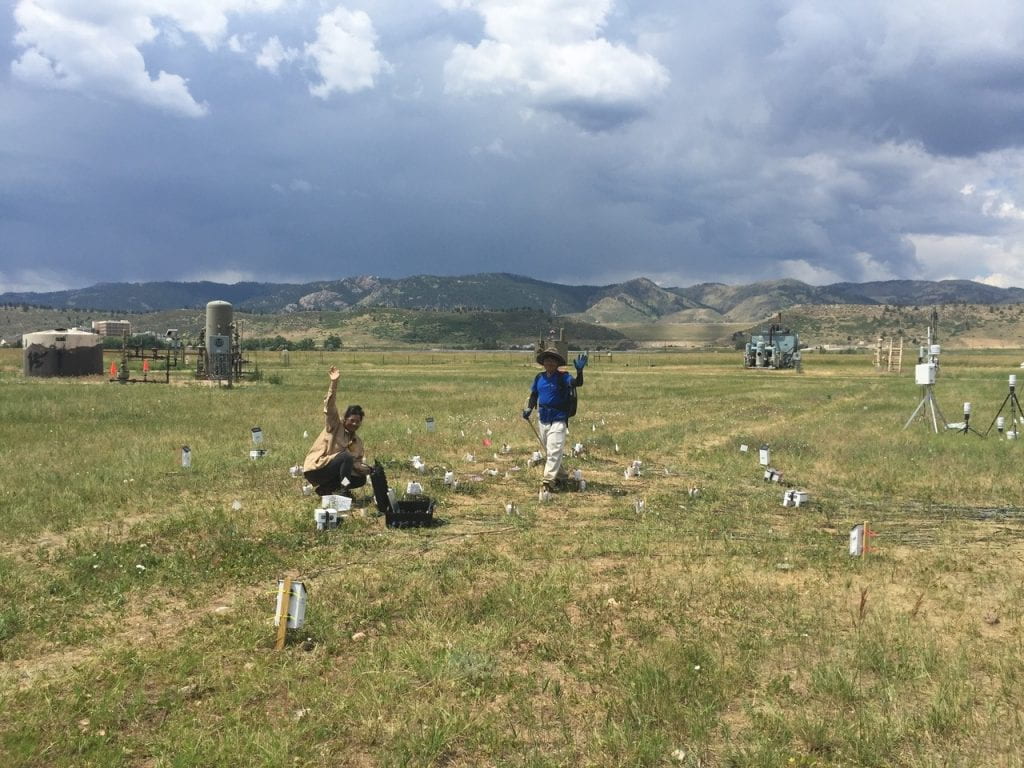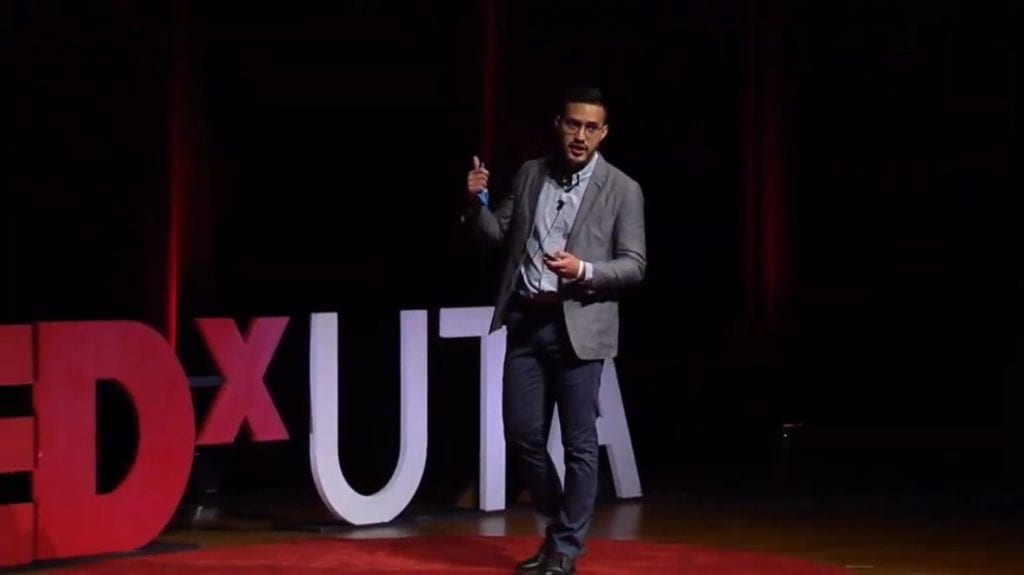We had the privilege to help welcome a Colombian exchange of undergraduate students from Universidad Nacional de Colombia.
The link is attached to the local article written from Mines.
We had the privilege to help welcome a Colombian exchange of undergraduate students from Universidad Nacional de Colombia.
The link is attached to the local article written from Mines.
Hello everyone! Please check out our newly launched website of an educational collective which will host numerous teaching resources for environmental and natural science education. This website will be actively updated with these lessons plans. They will be written in English and Spanish to increase its accessibility with the intention of reaching a global audience.
Check out the website here.

Back to the Field!
Hello from the Methane Emissions Technology Evaluation Center (METEC) (https://energy.colostate.edu/metec/) at Colorado State University (CSU) in Ft Collins! I’m Navodi Jayarathne, a PhD student in Kate Smits research group (https://smitshydrolab.uta.edu/) at The University of Texas at Arlington (UTA). As part of multiple interdisciplinary projects funded by the Department of Transportation, Energy and the Northeast Gas Association the CSU/UTA Methane Migration team is running a three-month series of natural gas experiments aimed at finding solutions for underground natural gas leakage related challenges. The METEC pipeline experimental testbed is equipped with environmental sensors to make shallow subsurface, near surface, and atmospheric natural gas (NG) measurements. The on-going integrated experiment series was designed to address multiple underground NG leakage related questions including the expansion of gas plumes based on soil and atmospheric conditions, the formation of preferential pathways and to evaluate the existing and emerging leak detection and quantification (LDAQ) solutions for underground NG leaks. Nothing like being out in the field in the beautiful Colorado summer!
Cheers,
Navodi Jayarathne
Photo curtsey: Dr. Younki Cho, Postdoctoral researcher, The University of Texas at Arlington, USA
Check post here.
*Copied from The Shorthorn – click here to go to original article*
Two governmental agencies awarded Kathleen Smits, civil engineering associate professor, grants to further her research studying detection and mitigation methods for large gas leak scenarios.
Smits received the grant awards in August from the U.S. Department of Transportation’s Pipeline and Hazardous Material Safety Administration and the Colorado Department of Natural Resources. The award sums were $365,000 and about $260,000, respectively. The aim is to prevent potentially life-threatening situations and help industry professionals and first responders better detect, trace and mitigate gas leaks when they occur.
The research focuses on understanding how natural gas migrates when it is leaked underground.
“What we’re interested in, with both of the grants, is understanding gas, when it leaks, how it moves underneath the ground and builds up and produces explosive concentrations within substructures,” Smits said.
Methane, which comprises the largest portion of natural gas, is a potent compound with long-lasting environmental impacts and is very explosive.
Methane’s lifetime in the atmosphere is much shorter than carbon dioxide (CO2), but CH4 is more efficient at trapping radiation than CO2. Pound for pound, the comparative impact of CH4 is 25 times greater than CO2 over a 100-year period, according to the Environmental Protection Agency.
Natural gas distribution is a significant source of these emissions, and Smits’ research is critical in accomplishing the goal of reducing emissions, civil engineering professor Melanie Sattler said.
Detecting gas leaks is a difficult task as pipelines are buried 3 to 6 feet underground, often running alongside other residential pipelines.
Sensors measure the concentration of methane in the surrounding area in order to locate if there is a leak and estimate its rate.
Environmental factors, such as soil condition and weather, affect how methane behaves when it is leaked from the subsurface, and this can interfere with the accuracy of the detectors, said Shanru Tian, civil engineering graduate student.
Mathematical modeling and experimentation allows scientists to account for the factors that affect the accuracy of detector designs and make them more accurate, Smits said.
Alongside mathematical modeling, the use of experiments is critical in increasing the accuracy of gas leak detection methods, she said.
Michelle Schwartz, civil engineering graduate student, said the testbeds she is helping design serve to simulate various real-life gas leak scenarios one would encounter at a site.
“I am designing a testbed facility that is going to simulate scenarios similar to what first responders and industry partners see if they get called to address the leaks,” Schwartz said.
Maintaining the close tie between performing physical experiments informed by mathematical modeling has been important, Smits said.
“Having that linkage between physical experiments and then mathematical experiments, through modeling, is critical to the work,” she said.
@Thevninr
*Copy from the original post that no longer exists*
A civil engineering associate professor at The University of Texas at Arlington has received a pair of grants focused on detecting and repairing natural gas leaks in underground pipelines.
For the first, Kathleen Smits is collaborating with Colorado State University on a two-and-a-half-year, $364,657 grant from the U.S. Department of Transportation’s Pipeline and Hazardous Material Safety Administration (PHMSA) to investigate leak detection and repair methods for underground pipelines, especially large leak scenarios.
The second project, funded by a two-year, $263,057 grant from the Colorado Department of Natural Resources, focuses on detecting and reducing natural gas emissions and decreasing the likelihood of accidents due to leaks.
Both grants build upon Smits’ previous research involving innovative sensor networks that allow monitors to quantify leak rates, how gas is moving and other key indicators so companies can make critical, real-time decisions to address problems.
The PHMSA grant will look at underground natural gas leaks with moderate to high flow rates (more than 100 cubic feet per hour). Smits and her team will create models to understand the leaks and how the gas migrates underground in controlled conditions at Colorado State’s Methane Emissions Technology Evaluation Center. The team will build pipelines, release points, sewer and telecommunications ducts, and buildings, then create methods to measure gas migration speeds underground and detect gas buildup above ground.
In addition to that work, the team will also engage with first responders from gas companies and fire departments to gain an understanding of how they approach large gas leaks.
“We have a lot of data from our research that tells us how gas flows from leaks,” Smits said. “We want to work with first responders to gain an understanding of what they do and why, based on their knowledge and best practices. We’ll pair our findings with different scenarios and link it to practice, which will help us to identify their priorities and set up simulations that will help increase safety and improve environmental impact.”
Under the Colorado Department of Natural Resources grant, Smits and her team will look at existing and emerging leak-detection methods to determine how to take information about a gas leak and turn it into actionable items.
“When there is a suspected gas leak along a pipeline, responders deploy some kind of technology to detect the leak–drones, satellite imaging, aircraft, or even a person walking with a sensor,” she said. “But once you determine that you have a leak, you have to quantify it. We’re creating models that will allow us to quickly determine how big a leak is and what the actual emissions are underground and in the atmosphere so the leak can be mitigated quickly and safely.”
Smits’ innovative research is influencing the field of pipeline safety, said Ali Abolmaali, chair of UTA’s Civil Engineering Department.
“Dr. Smits’ contributions to the fields of land-atmosphere interactions, shallow subsurface multiphase processes, contaminant transport and hydrology are well-recognized,” Abolmaali said. “She continues to be an impactful authority in her field.”
###
– Written by Jeremy Agor, College of Engineering
Jose Velazquez presented at a TEDx show at UT-Arlington about artisanal small-scale gold mining. Click here to watch.

UT-Arlington published a highlight over the research group’s work on natural gas pipelines in an article titled, “UTA Research to Provide Real-Time Data on Gas Leaks”. Click here to read the full article.
The Shorthorn, a student-run newspaper at UT-Arlington interviewed Jose Velazquez over his work in artisinal small-gold mining. Click here to read the article.
Congratulations to Bo for her article in the Vadose Zone Journal where she discusses her newly published work about undulating soil surface!
Click here to read more.